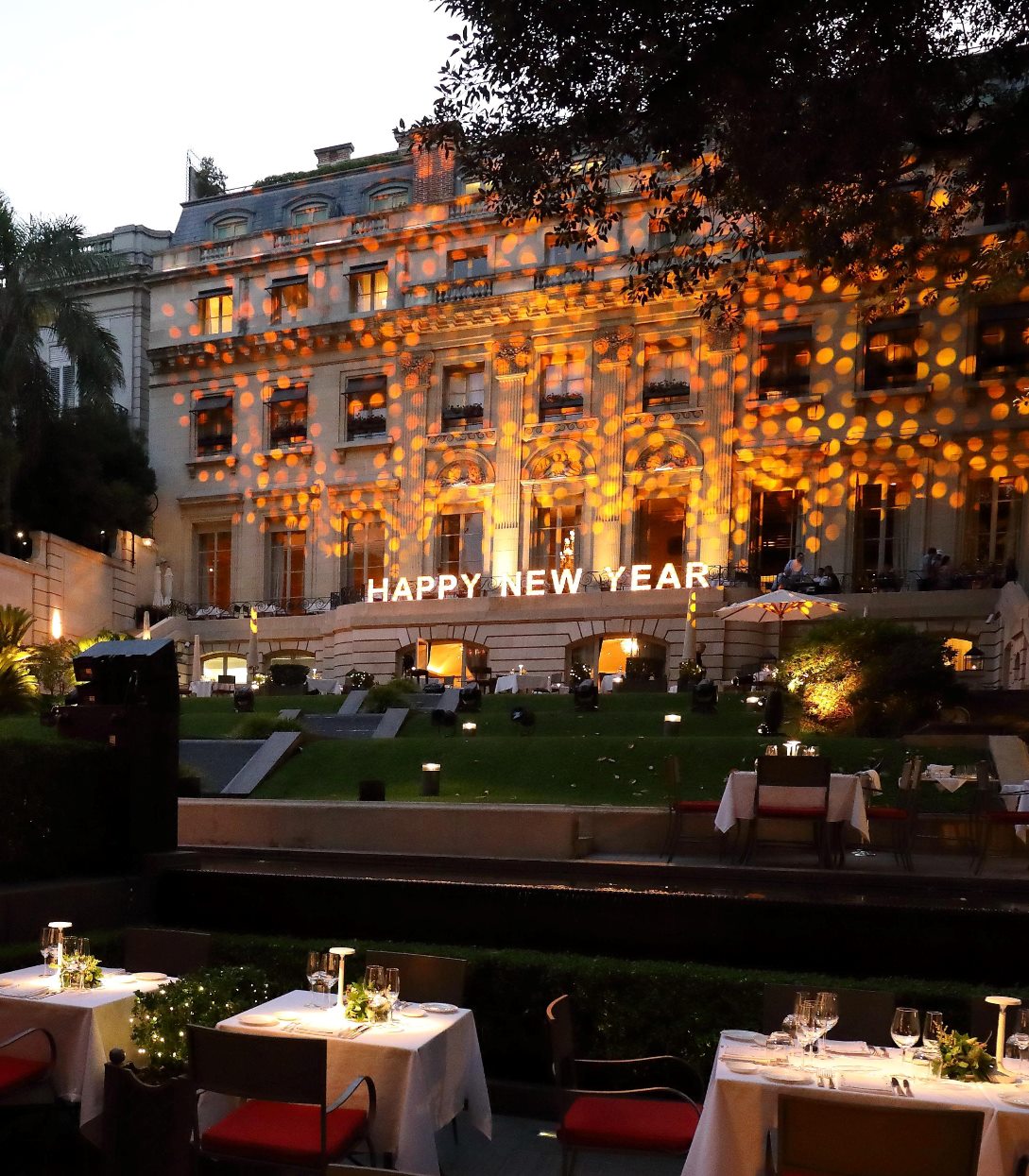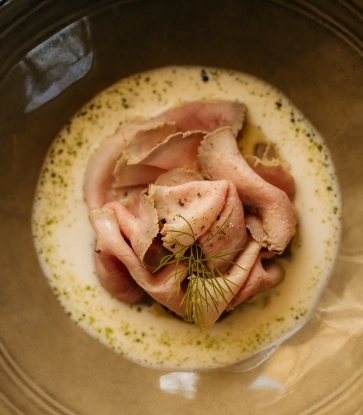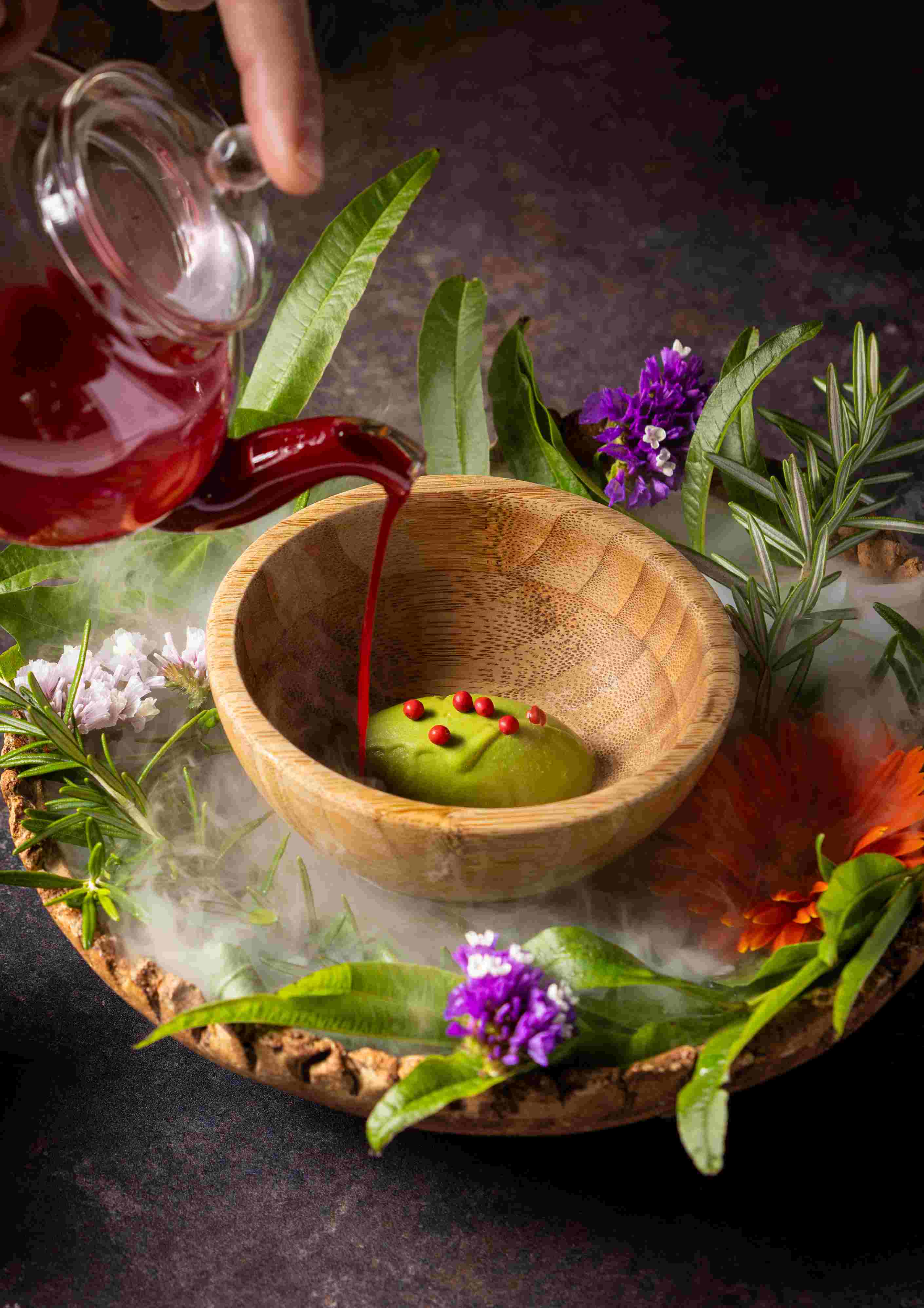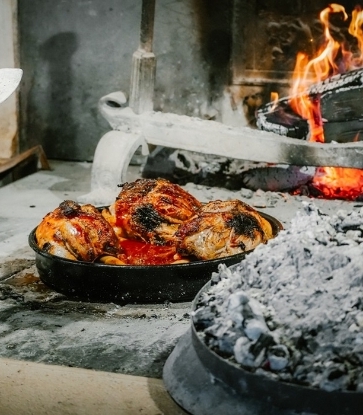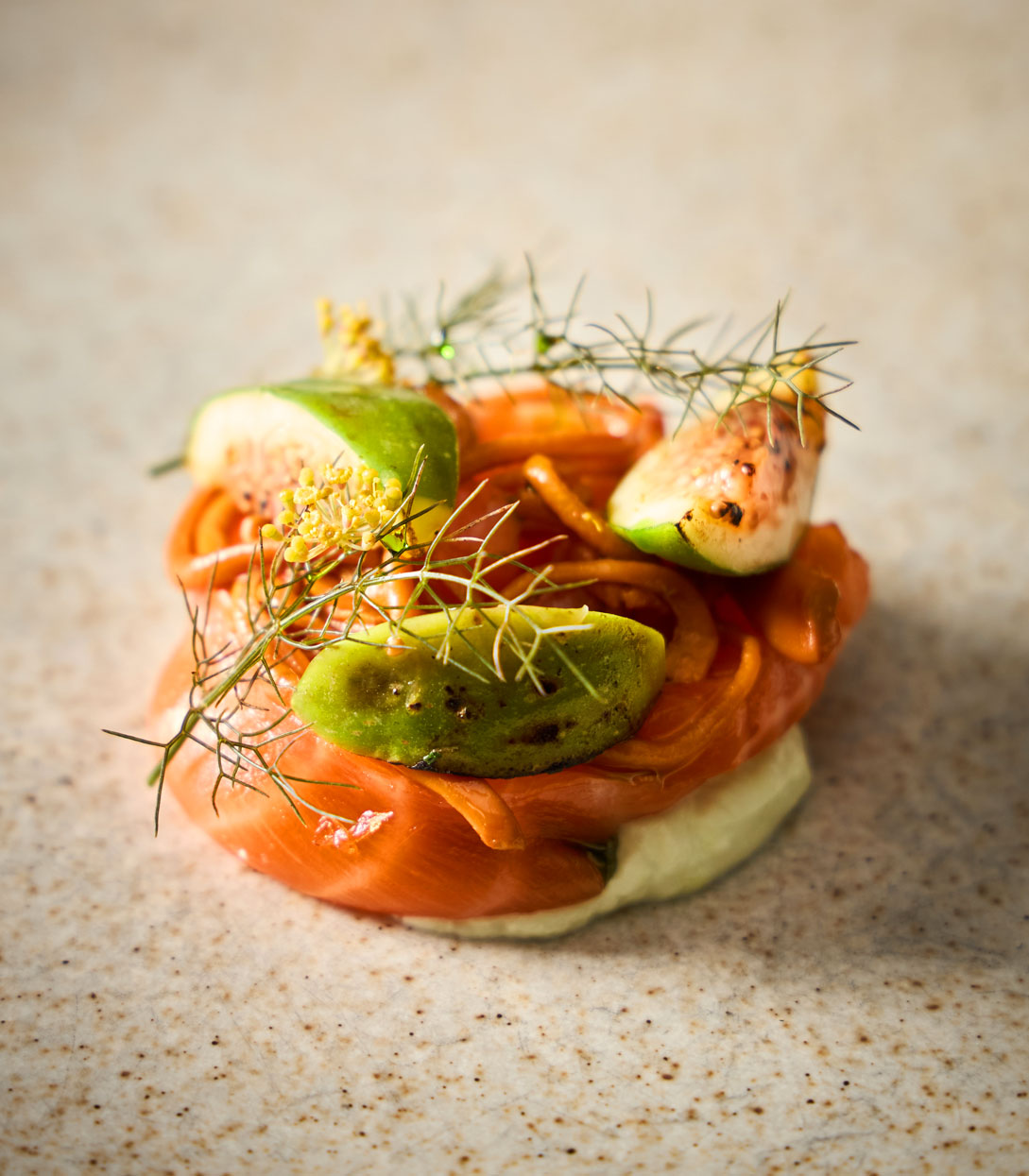Set at the very top of mainland Europe and bordering the Gulf of Riga and the eastern coast of the Baltic Sea, Latvia is one of the three aptly named Baltic States. Nestled below Estonia and above Lithuania, it blends elements from the both the East and the West, as well as influences from the nearby Nordic Countries. With its rich blend of history, natural beauty and cosmopolitan culture, there have always been many reasons to visit Latvia – and over the years that list has also come to include its cuisine.
Latvia certainly boasts a distinctive charm and allure which captivates visitors. Its history encompasses ancient folklore, medieval castles and time-honoured traditions – and from the enchanting cobblestoned streets of the capital to the quaint villages and ancient forests dotting the picturesque countryside, it offers a glimpse into a bygone era. Yet, at the same time, this is also a country that embraces the modern world with open arms.
Riga itself has a dynamic, vibrant energy and enchants visitors with its stunning architecture, world-class museums, bustling markets, lively arts scene and eclectic nightlife. Its UNESCO Heritage Old Town boasts sweeping squares and soaring spires, while its New Town – home to many chic cafés and trendy boutiques – plays host to Europe’s most impressive Art Nouveau ‘Jugendstil’ Quarter (also UNESCO recognised).
Venture further outside the city and you’ll discover that this is a country for nature-lovers too, with breathtaking landscapes taking in dense forests, pristine lakes and miles of unspoiled coastline. Numerous national parks and nature reserves make it a real paradise for outdoor enthusiasts, with birdwatching, wildlife spotting and hiking opportunities galore.

So, what about Latvia’s cuisine?
Similarly to other countries that have a cooler climate, many staple Latvian dishes have a hearty, comforting profile. Meat – particularly pork – smoked fish, grains and dairy products are all key to the country’s cuisine, along with aromatic herbs such as dill, caraway seeds and juniper berries, while influences from neighbouring countries also play their part. At home, you’ll find time-honoured recipes passed down through families from generation to generation, with many vying with each other for the best version of each dish!
Local, seasonal produce – including items foraged from the forest – are a feature here, with pickling being quite prevalent. The locals love to be immersed in nature – and what better way to enjoy a walk in the woods than by filling a basket full of mushrooms or berries? Chanterelles are probably the easiest thing to collect, as they have great resistance to pests and are easy to prepare or preserve – whether that’s boiled, baked, dried, salted or pickled.
A great place to familiarise yourself with the local produce is at the impressive Riga Central Market, located not far from the Daugava River. It’s one of Europe’s largest and busiest markets, with up to 10,000 visitors a day passing through its doors. Five imposing 1920s pavilions – two of which were formerly military airship hangers – house the food halls, with each one dedicated to a different category: vegetables, dairy, meat, fish and other gastronomic products. There’s also an outdoor area with stalls, a night market and a round-the-clock farmers’ market. Once a symbol of the deprivation of the Old Soviet days, it’s now a must-visit tourist destination and a great place to get acquainted with flavours of Latvian cuisine.
Below are some of the must-try dishes when visiting Latvia. Here, they are listed in their purest, most traditional form, but many chefs and restaurants now take a more modern approach to these classic recipes, blending new flavours and techniques to create remastered dishes that delight one and all.

BREAD
Rupjmaize
A Latvian staple for over a century – thanks to its easy production and nutritious value – this dark, dense bread is made from coarse rye flour, malt and caraway seeds, with the latter two ingredients imparting a unique and distinctive flavour that is both sweet and sour. The bread is cooked in a wood-fuelled hearth and then often served simply with butter or with a pungent cheese, cold cuts or smoked fish. As you’ll come to discover, this type of bread is a staple of nearly every meal, be it for starters, mains or dessert!BREAKFAST
Biezpiens
Cottage cheese – also known as curds, quark and farmers’ cheese – can be found in every Latvian kitchen. Mixed with sour cream, dill, parsley, cucumber or radish and then smothered on rye bread, it makes for a healthy breakfast. Another alternative is make cottage cheese pancakes, either paired with sour cream or, for something a little sweeter, topped with homemade jam or honey. This delicacy is not just reserved for breakfast though, when served with boiled potato, pickled herring and dill, it also makes for a delicious lunch.Zemnieku Brokastis
Requiring very little in the way of explanation, the ‘farmers breakfast’ is so-named as this simple, hearty dish makes use of what’s easily available on the farm. Smoked sausages, potatoes, eggs, milk and butter all come together – along with some dill of course – to create a very satisfying start to the day. If you’re looking for the Latvian version of the English breakfast, then this is it.
SNACKS & APPETISERS
Pīrāgi or Pīrādziņi
One of the Latvia’s most iconic treats, these small, light, crescent-shaped bacon buns are made from yeasty dough and filled with fatty bacon cubes and onion. Thy can be eaten as a snack or appetiser and are found at most major celebrations, from birthdays through to Christmas.Kartupeļu Pankūkas
Potatoes are often referred to as ‘second bread’ in Latvia and you’ll be hard pushed to find a home that hasn’t got some tucked away for a rainy day. They feature prominently in many dishes, whether mashed, made into a creamy potato salad or as these delicious potato pancakes which are served with sour cream. The pancakes are light and crunchy but eminently satisfying – and it’s hard not to eat too many!Ķiploku Grauzdiņi
The Latvian version of garlic bread pairs perfectly with a cold glass of beer! There are two cooking options. Firstly, the slices of rye bread can be pan-fried on both sides in butter or oil, then drained and rubbed with cloves of garlic; secondly, they can be baked in the oven before being coated with oil or butter. Prior to serving, it is sprinkled with salt.
SOUPS
Aukstā Zupa
If you see cold beet soup on a menu, then it means that summer has arrived in Latvia. Not only is this sweet, seasonal dish refreshing to eat, but its deep pink colour is a joy to look at. The pink hue comes from the beetroot, which is mixed with kefir, cucumber, boiled eggs, potatoes, dill, spring onions and horseradish – with an additional option of sausage. The soup is left in the refrigerator until chilled and then served with slices of bread.Skābeņu Zupa
The name of this soup refers to the sorrel leaves used, with skābs, meaning sour. It’s usually served hot, but it can also be served cold for a refreshing treat on warmer days. It’s made from beef stock, pearl barley, potatoes, onions and lemon juice – with smoked pork ribs often added – and sour cream and hard-boiled eggs added as garnishes.Frikadeļu Zupa
At the opposite end of the scale we have meatball soup – a favourite dish in the winter months. Minced meat (usually beef), potatoes, vegetables (typically carrots) and spices create a warming combination, which is often accompanied by rye bread and sour cream.
MAIN DISHES
Pelēkie Zirņi ar Speķi
Latvia’s national dish is a hearty, warming type of stew that dates back to a time when produce was scarce during the harsh winter months. The grey peas are unique to the Baltic region, both for their large size and distinct flavour profile; add to this chunks of diced speck and fried onions – and maybe some butter or cream – and you’ve got yourself a simple to prepare but very satisfying meal. Kefir or rye bread makes the perfect accompaniment.Karbonāde
A Latvian take on Wiener schnitzel, this dish is made by coating thinly sliced pork cutlets in flour and eggs, before frying them. They are often topped with a chanterelle sauce and paired with boiled potatoes, along with pickled vegetables, stewed sauerkraut (Štovēti Kāposti) or boiled buckwheat (griki).Karbonāde ar Kaulu
Another popular pork dish, Karbonāde ar Kaulu comprises pork chops with the meat still attached to the bone. They are fried quickly and then sautéed in a pan until tender. Latvians like to make the best use of their animals, so for the more adventurous, you’ll also find pork knuckle (cukas stilbs), pig’s ears (cukas auss), pig’s head stew (grudenis) and pig’s feet (cukas kajas). The latter, combined with fresh pork pieces from the bone and pork bouillon, also go into making jellied pork (galerts).
DESSERTS
Maizes Zupa
Rye bread soup brings together the Latvian people’s love of their national bread and their penchant for gathering berries. It’s made using moist rye bread passed through a sieve and mixed with sugar, dried fruits and cinnamon. It is usually served cold, along with a generous helping of whipped cream.Rupjmaizes Kārtojums
Rye bread is once again on the menu with this traditional layered dessert, which is somewhat similar to an English trifle. Sugar and cinnamon are added to the finely grated bread and pan toasted, before being layered with whipped cream and jam (originally cranberry due to its sour taste). It’s then topped with more whipped cream and fresh fruit and left in the fridge for a few hours to infuse. Nowadays, you’ll find many different varieties when it comes to both the flavour of the jam and the toppings.Sklandrausis
The first Latvian dish to be awarded ‘Traditional Speciality Guaranteed’ status by the European commission (next to specialities such as champagne and gorgonzola), sklandrausis is a tart made from rye pastry and filled with carrots and potatoes. Some recipe variations also include caraways seeds, while others use sugar or honey. The tarts are eaten cold with a glass of milk or tea.
DRINKS
Birch Juice
Spring marks the tradition of birch tree tapping. Small holes are drilled in the trees and sap – which has been filtered by the wood – is collected. It tastes fresh and sweet, with a refreshing edge, and the minerals inside also help extract toxins from your body. As well as juice, it can be turned into white wine, amber wine, sparkling wine and syrup. The window for production is short, as it can only begin once the ground has thawed and must end before the leaves begin to bloom.Kvass
A fermented drink with a cloudy appearance, kvass is made from water, malt extract, yeast, sugar and rye bread crusts, giving it a sweet and sour taste, where the pronounced flavour of the rye bread is balanced by the sweetness of the barley malt. With a very low alcohol content of less than 1%, it is often not considered alcoholic at all. Many love to celebrate the summer solstice with a glass of kvass at the Jāņi festival.Riga Black Balsam
The alcoholic drink of Latvia was created back in 1752 by apothecary Abraham Kunze for its healing properties. Thought to be the oldest bitter brand in the world, it has a bittersweet, umami taste, and comprises 24 natural ingredients – including 17 botanicals – as well as herbs and roots such as valerian, wormwood, ginger and gentian. Only the master distiller and his apprentice know the exact details of the creation process, which adds an intriguing air of mystery to this unique drink!
Where to Stay & Eat in Riga
A Culinary Road Trip in Latvia
Hero Image: Michelin-Recommended Milda in Riga



